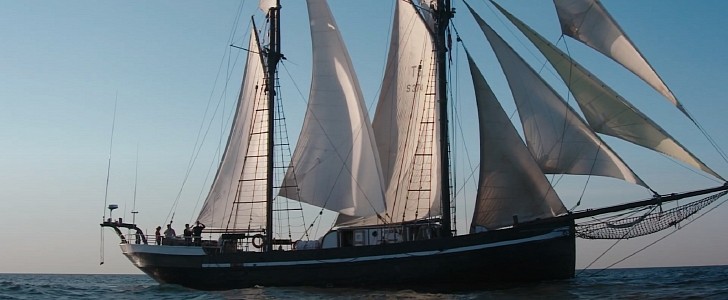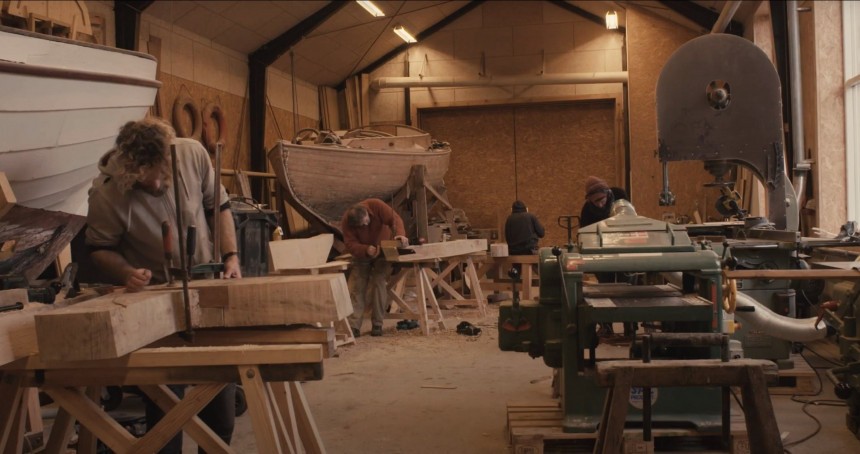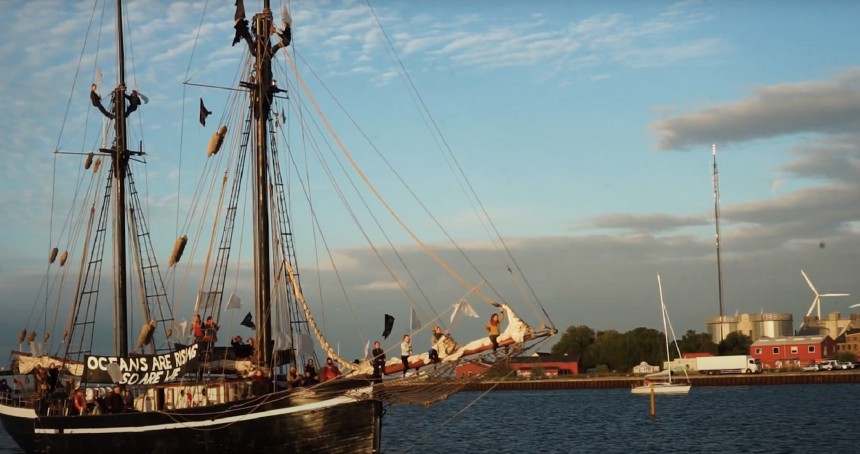Before diesel, gas, and electric engines on boats, people used to rely solely on sails and nature’s very own propulsion system, the wind. Engineless vessels are also sustainable vessels, which is something the world is in very much need of if we want to repair some of the damage we’ve done. It is what the Hawila Project is all about, trying to restore an 86-year-old Baltic Trader converting it into a CO2-free cargo ship.
Hawila is a coastal ice freighter built in Norway in 1935. It was constructed after the traditional sailing ship design of a Baltic Trader and has a rich historical background. The galeas was commissioned by a Swedish maritime family business and was initially equipped with a Diesel engine. It was used for ice cargo until the 60s, when it was abandoned on the Swedish shores once it couldn't serve the family's financial interests anymore.
But the story of the vessel went on, as it was found and repurposed to be used as a school ship. Hawila also served as a yacht for a Finnish businessman and as a Bed & Breakfast in Copenhagen, Denmark. After a total of three abandonments, it was finally recovered in 2013 by a group of young professionals who founded the non-profit organization Hawila Project and turned it into an educational sailing platform.
This year, the organization added another purpose for Hawila: to restore it to its former glory and use it for what it was initially intended: the transport of goods. According to Hawila Project, the current shipping industry is the sixth-largest greenhouse gas emitter in the world, with 99,9 percent of all organic and sustainable products being transported using container ships. Ninety-nine percent of these run on bunker oil, which is the dirtiest fossil fuel in the world.
Hawila is now also a cooperatively run company and is crowdfunding to turn the old vessel into a sustainable cargo ship. The plan is to use it to help producers transport their organic goods directly to consumers using the wooden sailing ship. An international group of volunteers is working on restoring and refitting the 114 ft (35 m)-long vessel, helping it set sails again.
In addition to using it for sustainable transport, Hawila Project also wants to use the ship to raise awareness about the ecological impact of the shipping industry, pressuring it to become cleaner.
According to the organization, Hawila will cross the Atlantic Ocean to bring organic produce to Europe during the winter, while during the summer, it plans to sail between Scandinavian coastal communities, building connections through various cultural and artistic events.
So far, the team has managed to replace frames and planks under the waterline. The next phase in the renovation process is to also replace the ones above the waterline, repair the deck, and build four watertight and fireproof bulkheads. Expenses have been covered by the team’s savings and public funds up until now. But the Hawila Project added crowdfunding to the list as well, creating an Indiegogo campaign.
According to the organization, the raised amount will be used for solar panels, a new set of sails (as seven of them need replacing with good quality canvas), rebuilding the mess-room and forward deck.
There are several attractive perks available to backers who choose to support Hawila’s cause. Aside from symbolic rewards such as t-shirts, key chains, and the like, the Hawila Project also offers sailing trips in the Baltic Sea, guided ship tours for up to 11 people, Transatlantic voyages for two months, including one to the Caribbean, and fully inclusive charters for organizations that have up to 20 participants.
A three-day sailing trip in the Baltic Sea will cost you approximately $470, while a guided ship tour will set you back around $800. Transatlantic voyages will cost you around $5,800 or $7,000 if you opt for the Caribbean trip. The most expensive perk is the fully inclusive charter, which goes for $11,650.
But the story of the vessel went on, as it was found and repurposed to be used as a school ship. Hawila also served as a yacht for a Finnish businessman and as a Bed & Breakfast in Copenhagen, Denmark. After a total of three abandonments, it was finally recovered in 2013 by a group of young professionals who founded the non-profit organization Hawila Project and turned it into an educational sailing platform.
This year, the organization added another purpose for Hawila: to restore it to its former glory and use it for what it was initially intended: the transport of goods. According to Hawila Project, the current shipping industry is the sixth-largest greenhouse gas emitter in the world, with 99,9 percent of all organic and sustainable products being transported using container ships. Ninety-nine percent of these run on bunker oil, which is the dirtiest fossil fuel in the world.
Hawila is now also a cooperatively run company and is crowdfunding to turn the old vessel into a sustainable cargo ship. The plan is to use it to help producers transport their organic goods directly to consumers using the wooden sailing ship. An international group of volunteers is working on restoring and refitting the 114 ft (35 m)-long vessel, helping it set sails again.
According to the organization, Hawila will cross the Atlantic Ocean to bring organic produce to Europe during the winter, while during the summer, it plans to sail between Scandinavian coastal communities, building connections through various cultural and artistic events.
So far, the team has managed to replace frames and planks under the waterline. The next phase in the renovation process is to also replace the ones above the waterline, repair the deck, and build four watertight and fireproof bulkheads. Expenses have been covered by the team’s savings and public funds up until now. But the Hawila Project added crowdfunding to the list as well, creating an Indiegogo campaign.
According to the organization, the raised amount will be used for solar panels, a new set of sails (as seven of them need replacing with good quality canvas), rebuilding the mess-room and forward deck.
There are several attractive perks available to backers who choose to support Hawila’s cause. Aside from symbolic rewards such as t-shirts, key chains, and the like, the Hawila Project also offers sailing trips in the Baltic Sea, guided ship tours for up to 11 people, Transatlantic voyages for two months, including one to the Caribbean, and fully inclusive charters for organizations that have up to 20 participants.















